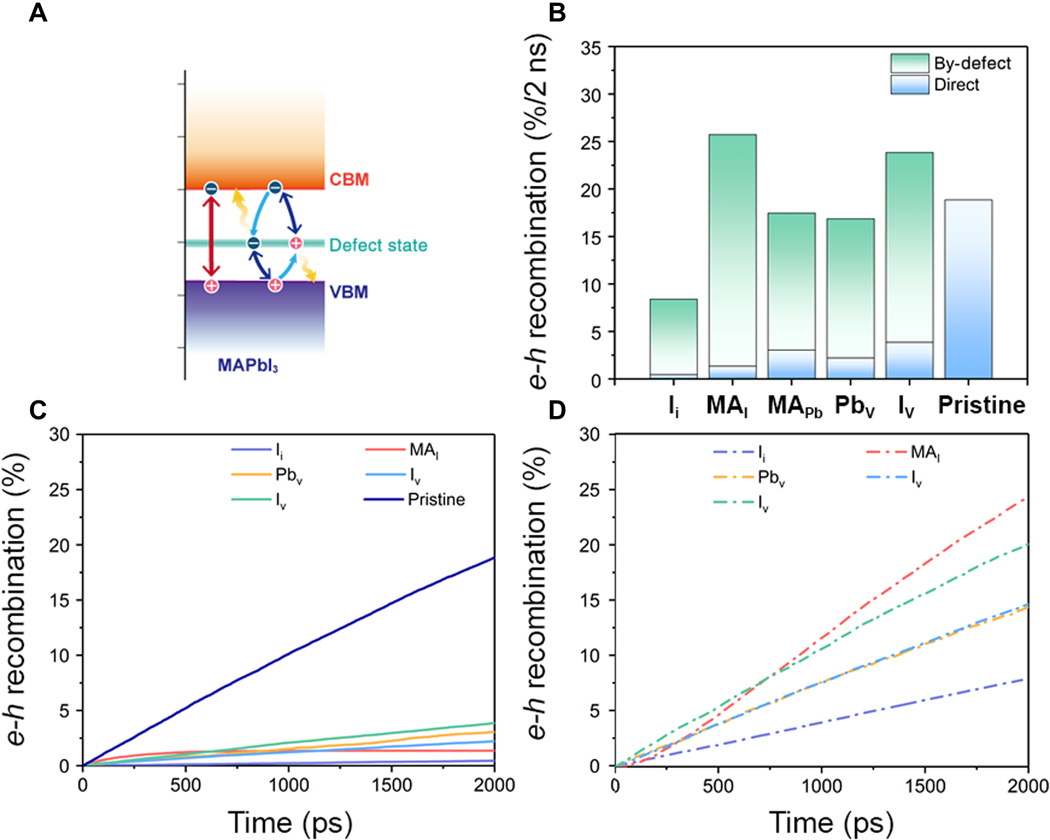A research team led by Prof. ZHAO Jin from International Center for Quantum Design of Functional Materials (ICQD), University of Sciences and Technology of China (USTC) found low-frequency lattice phonons in halide perovskites resulting in high defect tolerance toward electron-hole recombination with their independently-developed software, Hefei-NAMD. The study published in Science Advances on 14 Feb, of which Prof. ZHAO Jin from USTC and Prof. Wissam A. Saidi were co-corresponding authors and Dr. CHU Weibin from USTC was the first author.
Solar cells have been wildly used in various livelihood or industrial applications, while the efficiency and durability of solar energy semiconductors still harass manufacturers. Defects in semiconducting materials form electron-hole (e-h) recombination centers detrimental to solar conversion efficiency. It is an important scientific issue in this field.
As early as the 1950s, the scientists Shockley, Read and Hall proposed the famous Shockley-Read-Hall (SRH) model via which defect states in the band gap form e-h recombination centers. And for decades, the abstract model has been adapted by many scientists in the semiconducting field. However, it does not account for the electron-phonon coupling which is the key for e-h recombination by nonradiative processes.
In the work, Prof. ZHAO Jin’s group investigated the e-h recombination processes due to native point defects in methylammonium lead halide (MAPbI3) perovskites using ab initio nonadiabatic molecular dynamics and taking factors in count precisely such as electron-phonon interactions, energy levels, nuclear velocity, decoherence effects and carrier concentration. They found that charge recombination in MAPbI3 was not enhanced regardless of whether the defects introduce a shallow or deep band state, which meant the SRH theory lapsed.
Though analyzing the electron-phonon coupling quantitatively, they demonstrated that the photogenerated carriers are only coupled with low-frequency phonons and electron and hole states overlap weakly, which explained why MAPbI3 still shows high solar conversion efficiency with many defects. These findings are significant in the future design of functional semiconducting materials for solar energy conversion.

Defects fall in forming e-h recombination centers in MAPbI3 systems. (A) Schematic map of the by-defect e-h recombination processes. (B) e-h recombined percentage for different systems after 2 ns. (C & D) The direct and by-defect e-h recombined percentage. (Copyright from American Association for the Advancement of Science, 2020)
Paper link: https://advances.sciencemag.org/content/6/7/eaaw7453/tab-article-info
